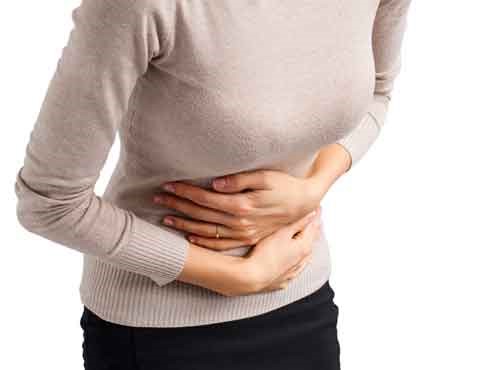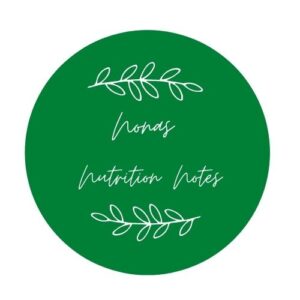Is the FODMAP diet the answer to your SIBO symptoms?

Is the FODMAP diet the answer to your SIBO symptoms? Eating and food usually bring comfort and pleasure. But for some, it results in abdominal distress. For example, symptoms such as pain and bloating or diarrhea and cramping can result from a meal that seems simple and ordinary. Why is it causing discomfort? In other words, is something wrong?
What is Small Intestinal Bacterial Overgrowth (SIBO)?
SIBO is one of many irritable bowel syndrome (IBS) conditions that produce these symptoms.
With SIBO your gastrointestinal tract is not functioning properly. For example, bacteria from one area of the gut, usually the colon, is growing in the small intestine. Food does not move as quickly as it should through the small intestine into the colon. In other words, it gets “stuck” and allows for bacterial overgrowth.
Diagnosis
SIBO is often difficult to diagnose clinically because the symptoms can be vague and mimic other IBS conditions. Your doctor may ask you to keep a food diary for a week or two. In other words, have you write down everything you eat and the symptoms that follow. Other more definitive methods of diagnosis may include medical tests such as the lactulose-hydrogen breath test (LHBT) or laboratory blood tests.
The LHBT measures the amount of hydrogen and methane gas produced after eating fermentable foods containing glucose or lactose, such as a food high in FODMAPs.
Laboratory or blood tests look for anemia, vitamin B12 levels, or prealbumin, thereby indicating signs of malnutrition. Vitamin K levels may be elevated due to increased bacteria.
Causes
If your doctor diagnoses your symptoms as SIBO you wonder what is the cause. Other conditions that interfere with normal food digestion such as celiac disease, Crohn’s disease, or diverticulosis can increase your chance of developing SIBO. Family history may also play a role. For example, if a parent or sibling have the disease, you may be more likely to have it too.
Celiac disease is an inflammatory disease caused by an intolerance to gluten-containing foods. This inflammation can also cause the destruction of the lining of the small intestine and lead to obstruction.
In Crohn’s disease scarring in the small intestine can cause an obstruction. This will slow transit time and allow for an increase in bacterial growth to occur. In other words, allowing for gas and bloat to develop.
Diverticulosis is a condition where tiny sacs form in the intestine allowing bacteria to multiply. Furthermore, these can become infected or inflamed. Consequently, producing abdominal pain and bleeding.
Treatments
It is important that treatments not only address symptoms but also any associated nutritional deficiencies.
Antibiotics

Antibiotic treatment is used to reduce bacterial overgrowth and is one option. To be successful the antibiotic must be able to target the specific bacteria causing SIBO. Therefore, broad-spectrum antibiotics such as Cipro and Amoxicillin are commonly chosen.
Probiotic Supplements
Probiotics are living organisms that help improve or restore normal gut flora. There are many different types of bacteria in the intestine. Therefore, a single probiotic is not likely to be effective. For example, choose a probiotic with at least two or more species to see the most benefit.
According to research, probiotic species containing Lactobacillus and Bifidobacterium have the best potential to restore normal flora. Therefore, these are better able to help manage the symptoms of SIBO and IBS.
Probiotic Foods
There are several foods that contain beneficial bacteria and have probiotic qualities.
- Yogurt is one of the most common and best food sources of probiotics. It is usually fermented by lactic acid and bifidobacterium. It is widely available and easily obtained in the market. Also, yogurt provides an excellent source of protein and calcium and is usually tolerated by those with lactose intolerance. Also, it is important when choosing yogurt to look for one with live or active cultures.
- Kefir is a fermented milk drink that contains several strains of helpful bacteria.
- Sauerkraut is cabbage that has been fermented by lactic acid giving it probiotic qualities. Additionally, sauerkraut has the benefit of fiber and vitamins C, B and K, thereby adding to its nutritional quality.
- Kimchi is also a fermented cabbage product. It contains lactic acid bacteria Lactobacillus kimchi.
- Miso is made from fermented soybeans. It is also a good source of fiber and vitamin K.
FODMAP Diet
Diet plays an important role in reducing the symptoms of SIBO. Simple sugars and short-chain carbohydrates are poorly absorbed in the small intestine. Consequently, these become food for bacteria and cause gas and bloating.
Foods known as FODMAPs or Fermentable, Oligo-, Di- and Monosaccharides And Polyols, exhibit these characteristics.
FODMAPS foods pull water into the intestinal tract and are usually not digested well. These foods then provide food for the overgrowth of bacteria. Consequently, this results in symptoms of bloating and gas as well as diarrhea or constipation.
While FODMAPs do not cause disorders, they may cause the symptoms. Therefore avoiding them is not a cure, but will improve the way you feel.
Where are FODMAPs found?
- Fructose is present in honey and high fructose corn syrup. It is also found in fruits and vegetables. Those highest in fructose are apples, mangoes, pears, persimmons, watermelon, and sugar snap peas.
- Lactose which is a component of dairy products is another FODMAP. Lactose is the sugar found in milk, cheese, ice cream, and sour cream.
- Fructans are found in grains, such as wheat, rye, couscous, and bulgar. These are commonly seen in bread, cereals, pasta, and snack foods.
- Galactans are found in legumes. For example, such as lentils, soybeans, chickpeas, and red kidney beans.
- Polyols are sweeteners. Artificial sweeteners, such as sorbitol, and xylitol are found in sugar-free gum and candy. Natural sweeteners are found in fruits such as avocados, apricots, cherries, nectarines, peaches, and plums.
There are inconsistent methods of measuring FODMAP content in foods. In other words, the cut-off levels are not clearly defined.
Therefore, foods are listed based on clinical observation and feedback from patients who have identified them as triggers. Also, foods are listed based on their make-up. In other words, based on their fructose or lactose content, for example.
Challenges of the FODMAP diet
High FODMAP foods to avoid or limit
- Fruits: Apples, Pear, Cherries, Plum, Avocado, Mango, Watermelon, Peaches, Blackberries
- Vegetables: Artichoke, Asparagus, Beets, Brussels Sprouts, Cabbage, Peas, Onions, Sugar Snap Peas, Radicchio
- Grains: Wheat, Rye, Couscous, Bulgar
- Legumes: Lentils, Dried Beans, Hummus, Pistachios, Cashews, Almonds
- Other: Garlic, Sugar free candy, Honey, Sodas, Agave nectar, High Fructose Corn Syrup
Low FODMAP foods to include
- Fruits: Pumpkin, Blueberries, Grapes, Oranges, Strawberries, Kiwi
- Vegetables: Spaghetti Squash, Broccoli, Carrots, Potatoes, Bell Peppers, Green Beans
- Grains: Oats, Oatmeal, Quinoa, Rice, Gluten-free bread, Unsweetened Cereals, corn, cornbread, grits, polenta
- Legumes: Peanuts, Seeds, Walnuts, Macadamia, Tofu, Peanut Butter
- Other: Meat, hard cheeses, Fish, Eggs, Olives, Almond Milk, Butter
Collect recipes for the FODMAP diet; Make a grocery list.
There are several Low FODMAP cookbooks available. Here are three written by dietitians:
- Low-FODMAP Diet, by Sue Shepherd Ph.D.; a practicing dietitian with a master’s in nutrition and dietetics.
- Low -FODMAP 28-Day Plan, by Kate Scarlata, RDN·
- Flavor without FODMAPs, by Patsy Catsos, MS, RD, LD
Here are some simple low FODMAP snacks to try:
- Fruit smoothie with almond milk and strawberries·
- Quesadilla with corn tortillas and cheddar cheese
- Rice cakes with peanut butter
- Oatmeal with blueberries
Read food labels.
Pay attention to and AVOID high-fructose corn syrup. This is usually found in many prepared items, such as:·
- sugary sodas
- energy, and sport drinks
- Candy, sugar, jams, and jellies
- Salad dressings, sauces, and condiments
- Ice cream and frozen desserts
- Bread, breakfast cereals, snacks, and cereal bars
- Canned fruits and juice
- Store-bought baked goods
- Pre-packaged foods and snacks
Try gluten-free grains
Gluten-Free grains do not contain wheat or rye and are low in FODMAPs. There is an increasing number of gluten-free items in the market every day. Consequently making it easier to find a large variety to choose from. For example, look for bread or cereal made from oats or oatmeal. Also, cornbread, grits, and corn puffs are gluten-free and low FODMAP.
Drink plenty of water
Water is the best way to stay hydrated. Hydration is important to keep your body functioning as normally as possible. It helps replenish fluids lost from frequent bowel movements or diarrhea. Try to consume at least 8-10 glasses of water each day. Also, increase your intake during times of flare-ups or illness.
Supplement with a Multi-Vitamin
Take a multivitamin and mineral supplement to meet your estimated recommended dietary intake (RDI) of vitamins and minerals. When foods are not digesting properly, nutrients are not absorbed well. Consequently, you run the risk of becoming deficient.
Evaluate your results
After a four to six-week trial period on the low FODMAP diet, try re-introducing a high FODMAP food. Begin with one food at a time and only in small amounts. If symptoms return, eliminate that food from your diet. Wait at least 3 days before trying a second new food. This will allow you to determine if a particular food is a trigger for you. In other words, a food or group of foods that make you feel ill.
Try an App
There are also Low FODMAP apps you can download to make meal planning easier:
- Fast FODMAP Look Up & Learn
- Low FODMAP diet A to Z
- Low FODMAP All in One
In Conclusion
Everyone is different and you may find that one or more foods you tolerate are not one tolerated by others. Also, you may find you tolerate food in a small quantity and not in a larger portion. Unfortunately, there is no easy answer. Therefore, it is a trial and error practice that takes patience and commitment.
You may find that one or two or a combination of treatment options work for you. Also, the same treatments may be helpful now and not in the future.
I hope you have gained some helpful information from this article and found some useful tips to minimize your SIBO symptoms.
References:
Therapeutic Advances in Chronic Disease, 2013 Sep; 4(5): 223-231Gastrointestinal bacterial overgrowth: pathogenesis and clinical significance. Amit H. Sachdev and Mark Pimentel.
Journal of Gastroenterology and Hepatology Research, Vol 2, No 6, 2013. Celiac Disease presenting as idiopathic terminal ileum obstruction. Chee-Kin Hui.
Crohn’s and Colitis Foundation.
Verywell Health, Digestive Health, Irritable Bowel Syndrome, Managing both IBS and Diverticulitis. Barbara Bolen, Ph.D., Dec 11, 2019.
Healthline, Probiotics 101: A Simple Beginner’s Guide, Kris Gunnars, BSc, Nov 13, 2018
Staudacher, HM Whelan, Altered gastrointestinal microbiota in irritable bowel syndrome and its modification by diet, probiotics, prebiotics, and the low fodmap diet. Proc Nutr. Soc, 2016; 75:306-318.
Stanford Hospital and Clinics, Digestive Health Center and Nutrition Services, The Low FODMAP Diet.
The FODMAPs Approach-Minimize consumption of fermentable carbs to manage functional gut disorder symptoms, Kate Scarlata, RD, LDN. Today’s Dietitian, Vol. 12, No. 8, P. 30

